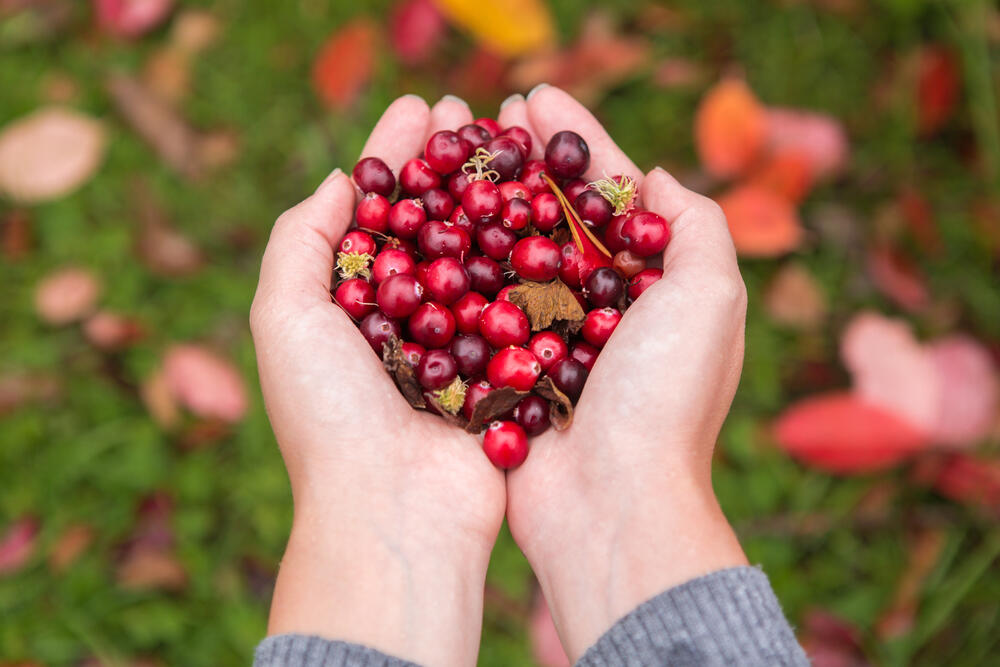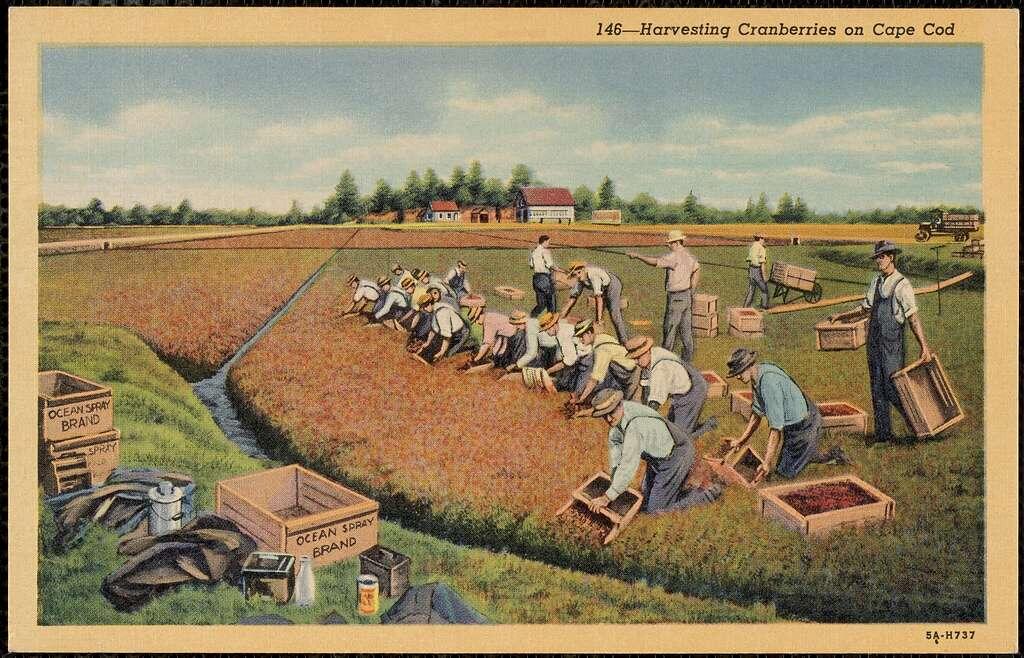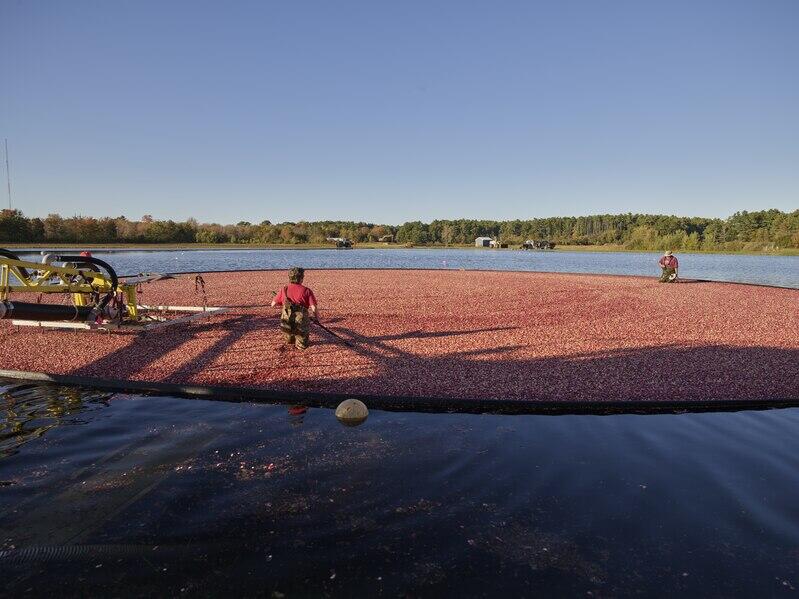- Trial Court Law Libraries

Every fall, the cranberry bogs of Massachusetts transform into a sea of red, signaling one of the state’s most iconic harvests. From the early morning fog to the gentle swish of water during wet harvesting, cranberry season is a spectacle of color, tradition, and hard work.
But did you know that behind every fruitful bog, there’s also a web of land use rules, environmental regulations, and food safety laws that help keep Massachusetts cranberry farming – and even home cranberry products – thriving?
A brief history
Cranberries have been cultivated in Massachusetts for centuries. Native Americans were the first to harvest cranberries, using them for food, medicine, and dyes. Many Eastern Native American tribes called cranberries “sassamanesh”; however, on Cape Cod, the Pequot tribe referred to them as “ibimi” (bitter berry) and the Wampanoag tribe called them “Sasumuneash.” They were an ingredient in “pemmican,” an early form of an energy bar – whose other ingredients included dried meat and tallow. (Cranberry recipes from Aunt Joan, a member of the Mashpee Wampanoag tribe, can be found on the tribe’s website.) European settlers later learned cultivation techniques, and today Massachusetts remains one of the nation’s leading cranberry producers, particularly on Cape Cod and Southeastern regions. A not so brief, but fascinating history can be found on the Cape Cod Life Publication website. For a brief – that is brief – history of cranberry sauce origins, refer to Peter Muise’s blog: A History of Cranberry Sauce.
How cranberries are harvested
Cranberries grow in low-lying bogs and are harvested by either a dry or wet harvesting method.
Dry harvesting
Mechanical pickers gently comb the berries from the vines – a method primarily used for fresh cranberries sold in stores. In earlier days, this process was done entirely by hand, a painstaking yet picturesque tradition of the cranberry harvest.
Wet harvesting
Cranberries contain small air pockets within the fruit, allowing them to float when the bogs are flooded for harvest. During this process, “water reels” – often called egg-beaters – churn the water to gently loosen the berries from their vines. Once freed, the floating cranberries are corralled with wooden or plastic booms and then lifted by conveyor or pumped into trucks for transport to receiving stations, where they are cleaned and processed.
Wet harvesting creates stunning reflections of red berries and autumn skies, making cranberry bogs a favorite subject for photographers.
Fun fact
Fun Fact: Ocean Spray - a farmer-owned cooperative founded in 1930 - produces roughly 70% of the world’s cranberries. In Massachusetts alone, more than 200 cranberry growers cultivate over 11,500 acres of bogs and maintain an additional 60,000 acres of surrounding open space. (Source: Cranberries.org)
From bog to table – and the law
Massachusetts cranberry farms operate under a mix of agricultural, environmental, and property laws:
- Land use and zoning: Farms must follow rules about agricultural land and permitted activities.
- Water & Environmental Laws: Cranberries need water for wet harvesting, irrigation, and frost protection – but farmers must follow state water rights and conservation rules.
- Worker safety and labor laws: Compliance with Massachusetts Department of Labor Standards.
One landmark case, Bearse v. Perry, 117 Mass. 211 (1875), dealt with the rights of a cranberry grower to flood land for bog cultivation - helping define how riparian (water) rights work in the Commonwealth and the passage of St. of 1866, c. 206, an Act to Authorize The Flowage Of Land For Agricultural Purposes:
Any person who is the owner or lessee of a tract of land appropriated to the cultivation and growth of the cranberry, may erect and maintain a dam upon and across any stream not navigable, for the purpose of flowing and irrigating said land, upon the terms and conditions, and subject to the regulations, contained in chapter one hundred and forty-nine of the General Statutes; and the provisions in said chapter relating to mills and the flowage of lands, shall apply to the respective parties under this act, so far as the same are properly applicable in such cases.
This law is now codified as M.G.L. c. 253, § 39.
Did you know? Cranberries were one of the first agricultural products regulated under U.S. federal marketing orders (since 1939). The Cranberry Marketing Committee operated until 2024 under the USDA to stabilize prices and ensure quality – an example of federal agricultural law when it was in action.
If you’re curious about these regulations – or thinking about starting your own small farm – the Massachusetts Trial Court Law Libraries can help. Librarians can guide you to:
- State and town statutes and regulations governing agriculture and wetlands.
- Land use rules, zoning codes, and property law references.
- Legal resources on labor laws and workplace safety for farm operations.
Cranberry bog law and homemade treats
In the early 20th century, as cranberry farming expanded across southeastern Massachusetts, many farm families began making and selling cranberry sauces, jams, and relishes from their home kitchens. These small home-based food businesses – often run by women – became known as “cottage industries” or “cottage kitchens.” Certain foods (like jams, baked goods, and dry mixes) can often be sold from home, but perishable items like juices or sauces may require commercial kitchen use.
Thinking of selling cranberry jam, sauces, or baked goods from your home kitchen? Cranberries are more than a pretty fall fruit - they come with some interesting legal rules regarding their sale too!
Massachusetts law has rules for home-based food businesses:
- You may need a cottage food license from your local Board of Health.
- Labeling requirements: Ingredients, allergens, and contact info must be on the product.
- The Retail Food Code guidance provides information on food safety.
Celebrate the cranberry
Beyond the legal side, cranberries are a symbol of Massachusetts heritage and ingenuity. Visiting a cranberry bog in the fall can be fun and educational – many farms offer harvest tours, and educational programs.
Whether you’re sipping cranberry juice, spreading fresh sauce on Thanksgiving, or snapping photos of a sun-drenched bog, cranberries connect us to the land, the season, and a uniquely Massachusetts tradition. And if you’re curious about the legal rules that make it all possible, the Law Libraries can guide the way!
Legal resources:
- Trial Court Law Libraries – offering portals to research property, zoning, environmental, and food safety laws.
- Ask a Law Librarian – offering free reference services to provide information on Massachusetts agriculture and home-based food regulations.
Additional resources
Cranberry farming in Massachusetts
- Cape Cod Cranberry Growers’ Association (CCCGA): Explore the rich history of cranberry cultivation in Massachusetts and learn about local growers.
- Cranberry Bog Program: Learn more about cranberry bog program, which is part of the Division of Ecological Restoration, or check out the UMASS Cranberry Station's website.
- Massachusetts Department of Agricultural Resources (MDAR): Supports and regulates the state's agricultural community to promote food safety and environmental sustainability.
Home-based cranberry products
- Massachusetts Cottage Food Operations: Guidance on selling homemade food products, including cranberry jams and baked goods, from your home kitchen.
Labor and safety regulations
- Department of Labor Standards (DLS): Promotes and protects workers' safety, health, wages, and working conditions in Massachusetts.
Authored by Mitzi Krueger, Head Law Librarian at the Barnstable Law Library.



